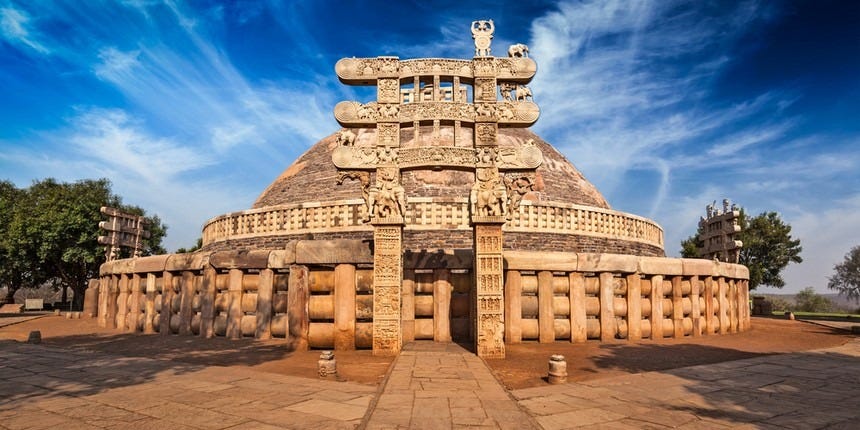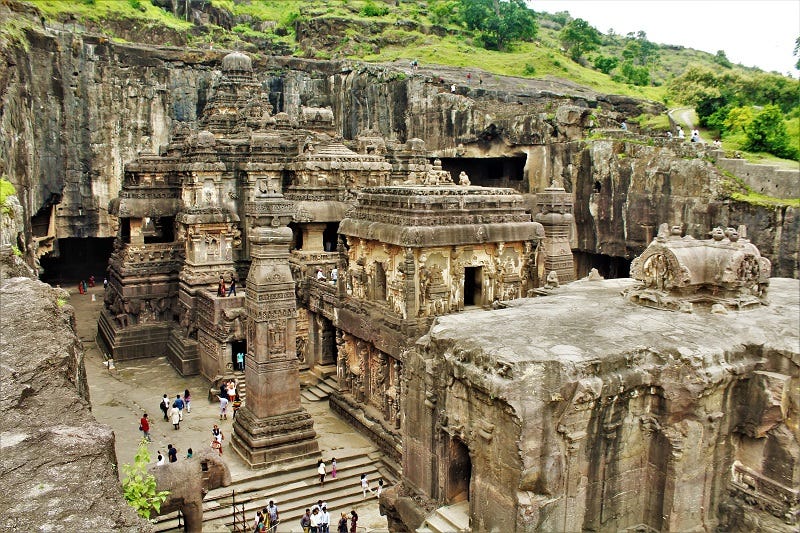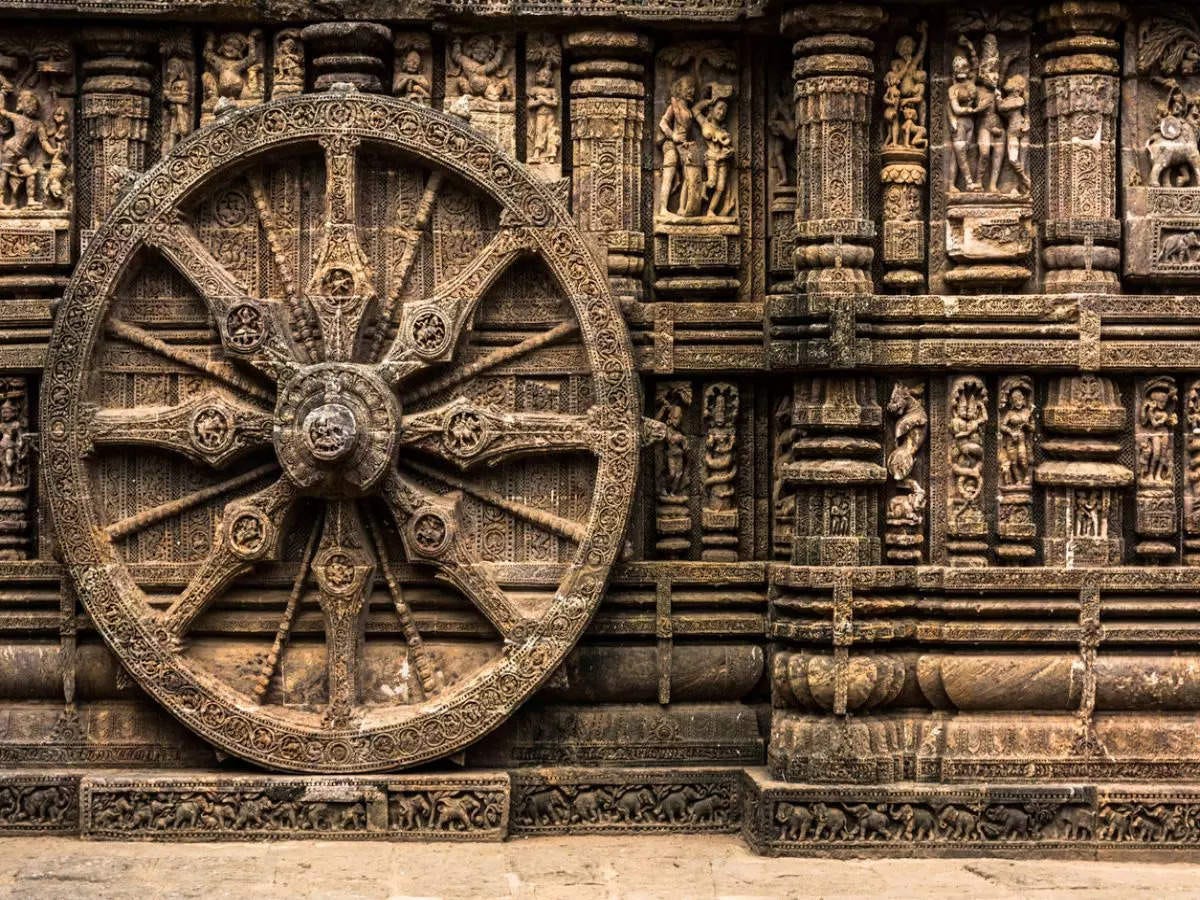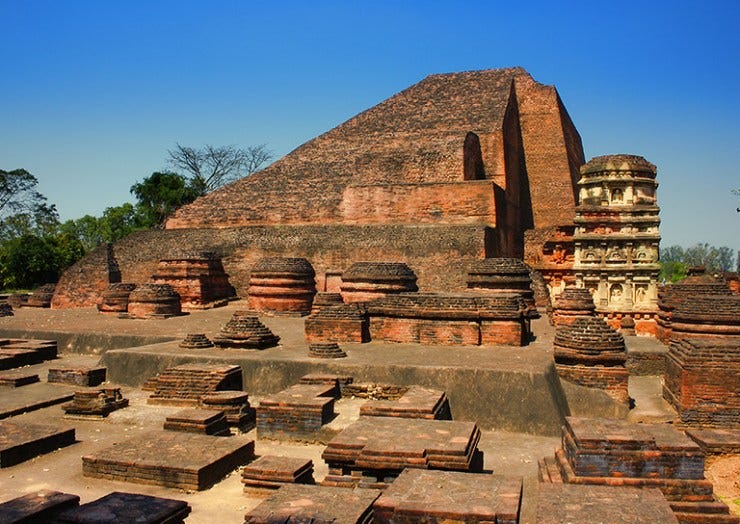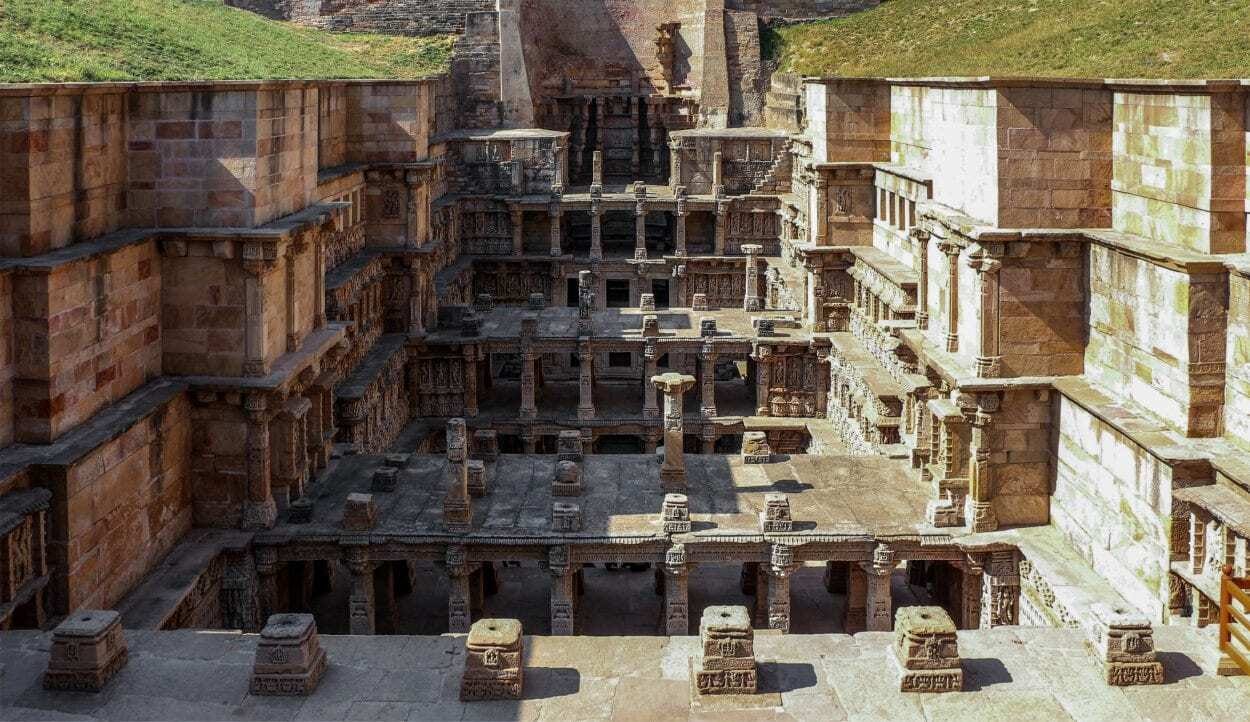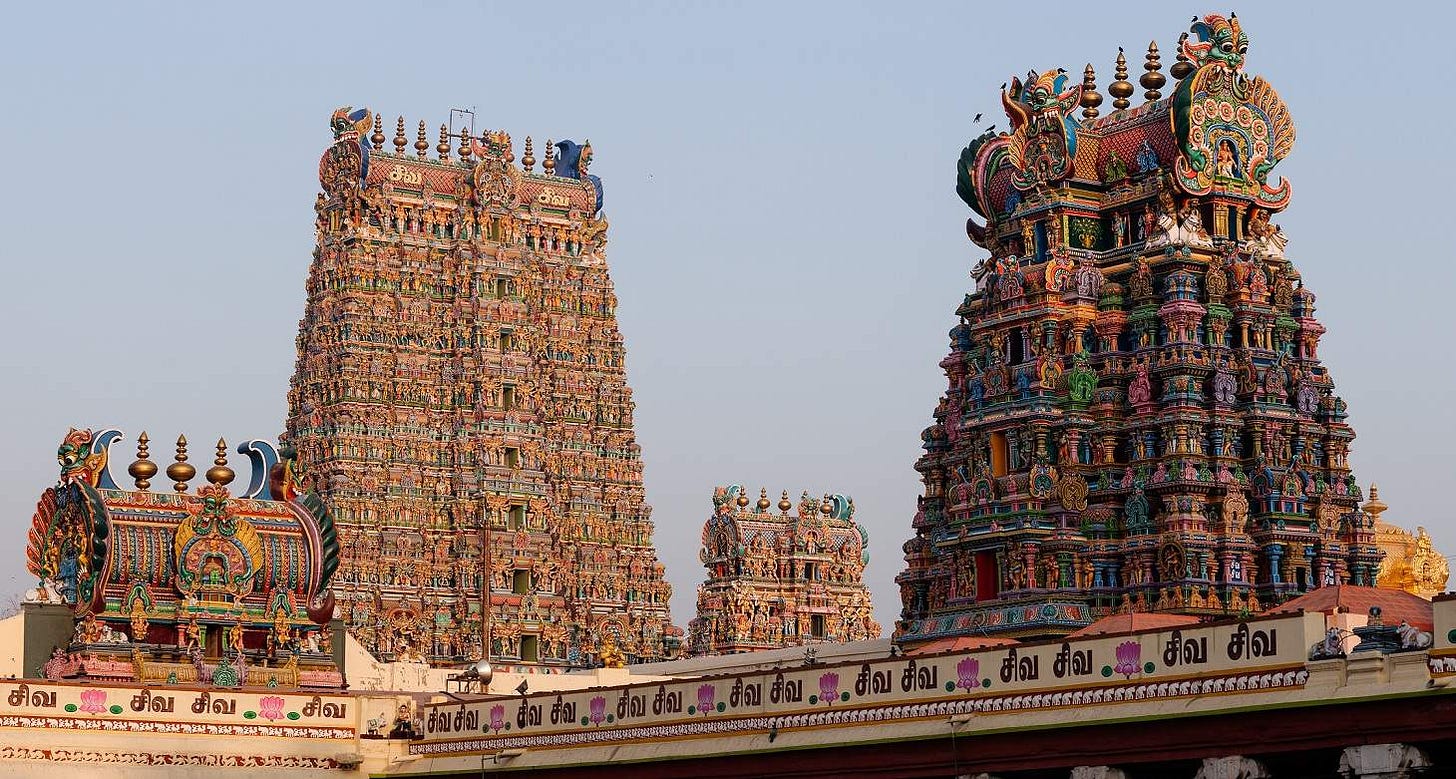Discovering the Seven Wonders of Ancient India - A Journey Through Time and Architecture 🏰✨
"Dive into the rich tapestry of Ancient India's wonders! Explore spiritual stupas, intricate temples, and subterranean marvels - a journey through time awaits. 🌍✨ #AncientWonders #HistoryUnveiled"
Dear Ancient Wonders Enthusiasts,
Hold onto your time-traveling hats because we have a special request for you in this edition of Ancient Wonders! But before we unveil the mystery, make sure to read this entire post to discover the captivating tales behind the Seven Wonders of Ancient India.
1. The Great Stupa of Sanchi: A Spiritual Marvel
Our first stop takes us to the heart of Madhya Pradesh, where the Great Stupa of Sanchi awaits. Immerse yourself in the intricate carvings and explore the spiritual significance that echoes through its ancient walls.
Let's delve deeper into the first wonder on our mesmerizing journey through ancient India – The Great Stupa of Sanchi. Standing proudly in the serene landscape of Madhya Pradesh, this architectural marvel takes us back in time to the 3rd century BCE. Crafted under the patronage of the Mauryan Emperor Ashoka, the Great Stupa radiates spirituality and artistry.
As you wander through its ancient precincts, the intricate carvings narrate stories of the Buddha's life and teachings. Marvel at the toranas, elaborately carved gateways, adorned with symbolic representations that offer a visual feast for history enthusiasts. The hemispherical dome, housing sacred relics, symbolizes the cosmic axis and serves as a focal point for pilgrims seeking spiritual enlightenment.
Beyond its physical grandeur, the Great Stupa of Sanchi transcends time, carrying the echoes of an era when Buddhism flourished in India. Its enduring significance lies not just in the stones and pillars but in the spiritual energy that pervades the air. Join me in this virtual exploration, and together, let's uncover the mysteries and stories concealed within the ancient walls of The Great Stupa of Sanchi.
2. The Temple of Kanchipuram: A Testament to Dravidian Architecture
As we traverse the cultural tapestry of ancient India, our second stop brings us to the resplendent Temple of Kanchipuram in Tamil Nadu. Set against the backdrop of the bustling city, this architectural gem stands as a testament to the grandeur of Dravidian artistry.
Built during the Pallava dynasty, this temple is not merely a structure; it's a living heritage that encapsulates centuries of cultural evolution. The intricate carvings that adorn its towering spires narrate tales of devotion, battles, and the pursuit of spiritual enlightenment. Every nook and cranny reveals the meticulous craftsmanship that has enthralled generations.
What sets the Temple of Kanchipuram apart is its role as a hub of cultural convergence. It served not only as a place of worship but also as a center for scholarly pursuits, where poets, scholars, and artists converged to celebrate the rich traditions of the region.
Join us as we unravel the mysteries concealed within the hallowed walls of the Temple of Kanchipuram. Discover the symbolic significance of its architectural elements and the cultural influence that has shaped the spiritual landscape of Tamil Nadu. This wonder beckons, inviting you to delve into the soul-stirring stories etched in stone.
3. The Ajanta and Ellora Caves: A Fusion of Art and Religion
Prepare to be transported to Maharashtra, where the Ajanta and Ellora Caves beckon with a symphony of art and religious devotion. Carved into the rugged mountainside, these caves stand as a testament to the artistic prowess of ancient India.
The Ajanta Caves, dating back to the 2nd century BCE, house an extraordinary collection of murals and sculptures that narrate tales from the Jataka stories and depict the life of Buddha. Wander through the dimly lit corridors, and you'll find yourself immersed in a world where every stroke of the chisel seems to breathe life into the rock.
In contrast, the Ellora Caves, a UNESCO World Heritage Site, showcase a unique fusion of Hindu, Buddhist, and Jain traditions. Carved between the 6th and 10th centuries, these caves boast of the monolithic Kailasa Temple, an architectural marvel dedicated to Lord Shiva. Marvel at the intricate detailing, from the majestic sculptures to the ornate pillars, each telling a story of devotion and skill.
As you explore the Ajanta and Ellora Caves through Ancient Wonders, let your imagination soar amidst the ancient artisans' ingenuity and spiritual dedication. Share your reflections and insights, making our collective journey through time more vibrant.
4. The Sun Temple of Konark: A Marvel in Odisha
In the realm of architectural splendors, the Sun Temple of Konark in Odisha stands as an unparalleled marvel, a testament to human ingenuity and devotion. This awe-inspiring structure, dedicated to the Sun God, Surya, boasts a design that intricately captures the sun's journey across the sky.
Constructed in the 13th century by King Narasimhadeva I, the temple is a symbolic chariot with 12 intricately carved stone wheels representing the months of the year. The wheels, adorned with exquisitely detailed spokes and motifs, create a celestial dance of light and shadow as the sun moves across the horizon.
The temple's architecture transcends mere aesthetics; it serves as a cosmic calendar and an astronomical wonder. The sanctum, once housing a colossal image of the Sun God, now lies in ruins, yet the intricate carvings depicting various aspects of life, mythology, and cultural practices endure as a testament to the artistic brilliance of ancient Odisha.
As you immerse yourself in the tales of the Sun Temple of Konark, envision the grandeur of a bygone era and appreciate the meticulous craftsmanship that has left an indelible mark on India's architectural heritage. Stay tuned for more captivating stories from the Seven Wonders of Ancient India, where history and art converge in a timeless dance.
5. The Nalanda University: A Center of Knowledge and Wisdom
As we continue our journey through the enchanting Seven Wonders of Ancient India, let's delve into the illustrious history of the Nalanda University, a true beacon of knowledge and wisdom.
Situated in the historic land of Bihar, the ruins of Nalanda University tell a tale of unparalleled intellectual excellence that graced the Indian subcontinent from the 5th to the 12th century. Founded during the Gupta Dynasty, Nalanda evolved into a renowned center of learning, drawing scholars, philosophers, and students from across the world.
At its zenith, Nalanda boasted an architectural marvel – a sprawling complex with lecture halls, meditation rooms, and a massive library housing countless manuscripts. It was here that students engaged in rigorous academic pursuits, studying various subjects ranging from astronomy to medicine, philosophy to linguistics.
The presence of accomplished scholars like Aryabhata, Nagarjuna, and Harsha lent Nalanda its scholarly prestige. The exchange of ideas among diverse cultures fostered an atmosphere of intellectual ferment, making it a melting pot of knowledge.
Though time has weathered its physical remnants, the spirit of Nalanda lives on, inspiring generations to pursue the path of learning and enlightenment. Join me in marveling at the intellectual legacy of Nalanda University, a testament to the enduring power of knowledge throughout the ages.
6. The Rani Ki Vav: A Subterranean Stepwell
Venture with me into the intricate depths of wonder as we explore the Rani Ki Vav, a subterranean stepwell that beckons from the ancient landscape of Gujarat. Carved with meticulous precision, this architectural marvel unveils the artistry of water conservation and reveals a tale of both practicality and aesthetics.
Constructed in the 11th century by Queen Udayamati in memory of her husband, King Bhimdev I, the Rani Ki Vav stands as a testament to the ingenuity of ancient Indian engineering. As you descend into its labyrinthine levels, be prepared to be mesmerized by the symphony of intricately carved panels, depicting a myriad of mythological stories, celestial beings, and everyday life.
The stepwell not only served as a source of water but also as a spiritual retreat. The beautifully adorned walls are a canvas portraying deities, celestial nymphs, and intricate ornamentation, showcasing the fusion of functionality with artistic expression.
Intriguingly, the stepwell experienced a long period of submersion due to the nearby Saraswati River changing its course. Rediscovered in the 20th century, its restoration has allowed us to witness the resplendent glory of Rani Ki Vav.
Join me on this virtual expedition as we uncover the hidden wonders of Rani Ki Vav, a marvel that seamlessly intertwines practicality and artistry, leaving an indelible mark on the tapestry of ancient Indian architecture.
7. The Meenakshi Amman Temple: A Marvel of South Indian Architecture
As our exploration of the Seven Wonders of Ancient India reaches its pinnacle, we find ourselves in the enchanting temple city of Madurai, where the Meenakshi Amman Temple reigns supreme. This architectural gem, dedicated to the goddess Meenakshi, is a living testament to the grandeur of South Indian art and culture.
The Meenakshi Amman Temple is a sprawling complex of awe-inspiring structures, adorned with towering gopurams (entrance towers) and intricate sculptures that narrate mythological tales. What sets this wonder apart is its meticulous attention to detail, showcasing the pinnacle of Dravidian architecture. The vibrant colors, meticulously carved pillars, and majestic sculptures depicting gods and goddesses create an otherworldly atmosphere for visitors.
At the heart of the temple lies the sanctum sanctorum, where devotees gather to pay homage to Meenakshi and her consort, Lord Sundareswarar. The temple's thousand-pillared hall, each pillar a masterpiece of craftsmanship, further adds to the sense of divine magnificence.
Beyond its religious significance, the Meenakshi Amman Temple stands as a cultural hub, hosting festivals, music, and dance performances that celebrate the rich heritage of South India. As the sun sets, the temple comes alive with a mesmerizing display of lights, casting an ethereal glow that captivates the soul.
In the shadows of the towering gopurams, the Meenakshi Amman Temple remains not just a wonder of ancient architecture, but a living testament to the enduring spirit of South Indian splendor.
My Special Request
Now, here's our heartfelt and special request: As the curator and explorer behind Ancient Wonders, I face financial challenges. If you have enjoyed the journey through time with Ancient Wonders and would like to extend your support, consider making a small contribution to help me continue this exploration. Your generosity will not only assist in covering research expenses but will also contribute to the continuation of this historical adventure.
Thank you for being an integral part of the Ancient Wonders community. Your enthusiasm fuels our journey through time, unraveling the mysteries of the past.
Happy reading and exploring!
Warm regards,
Sumer Saini


